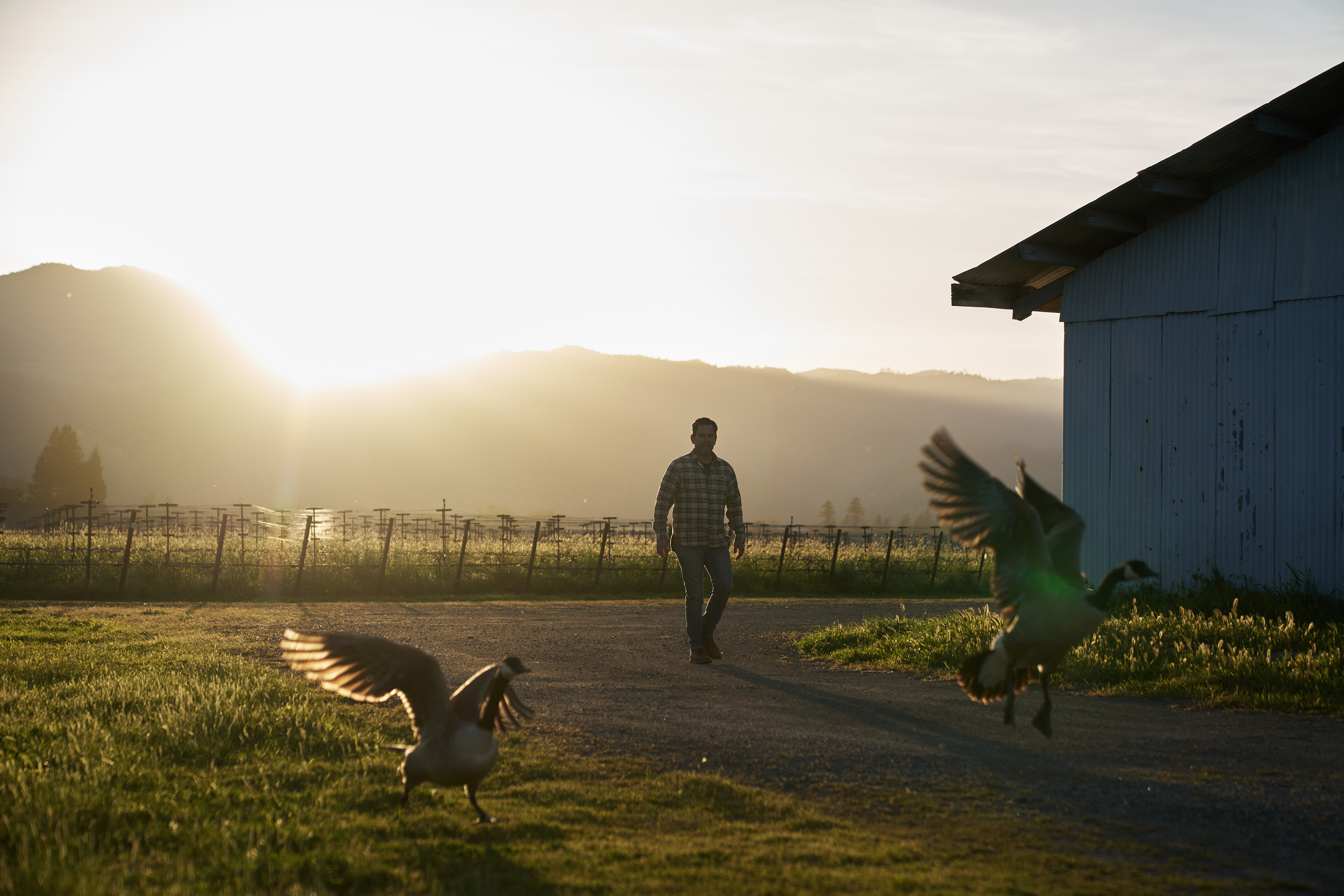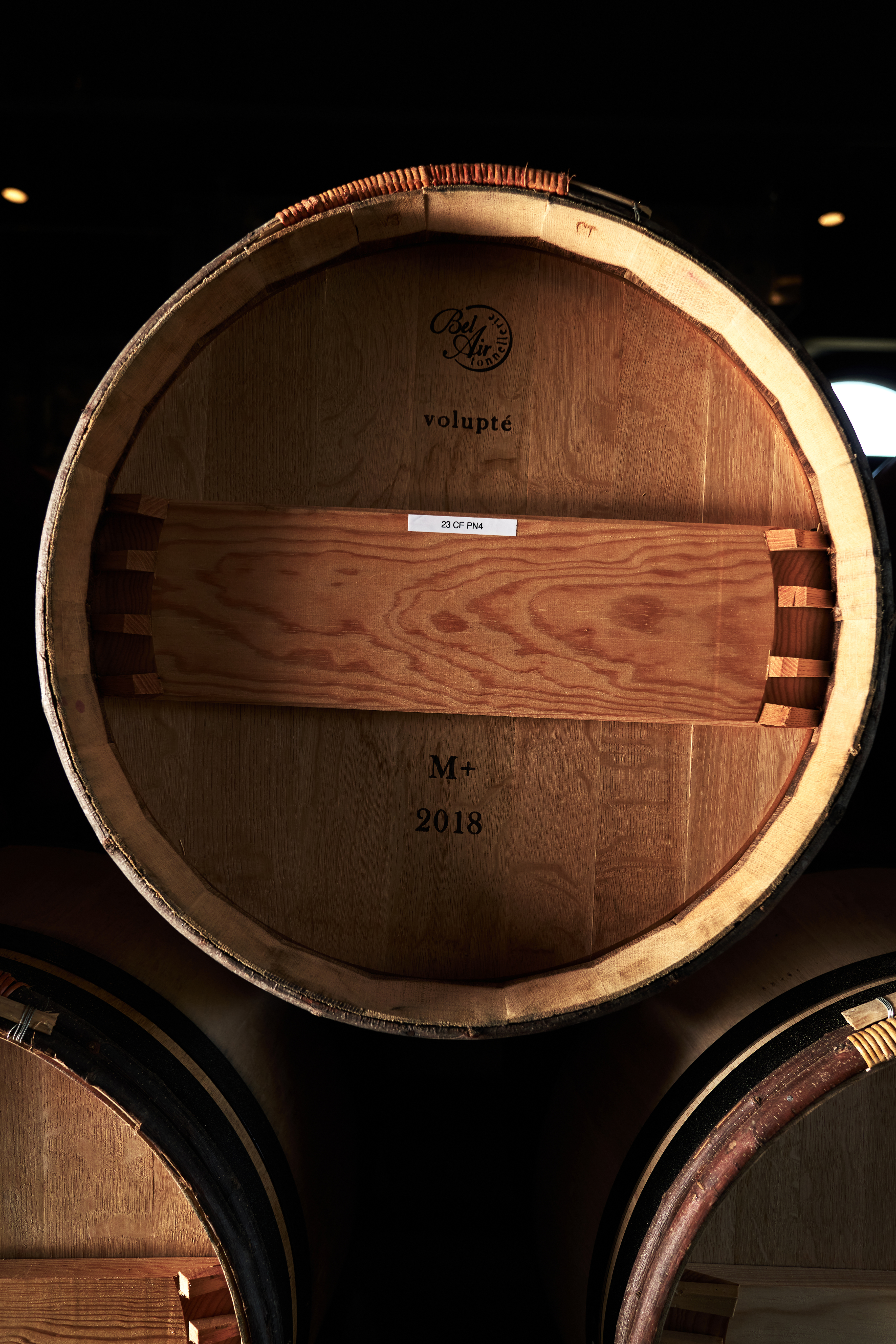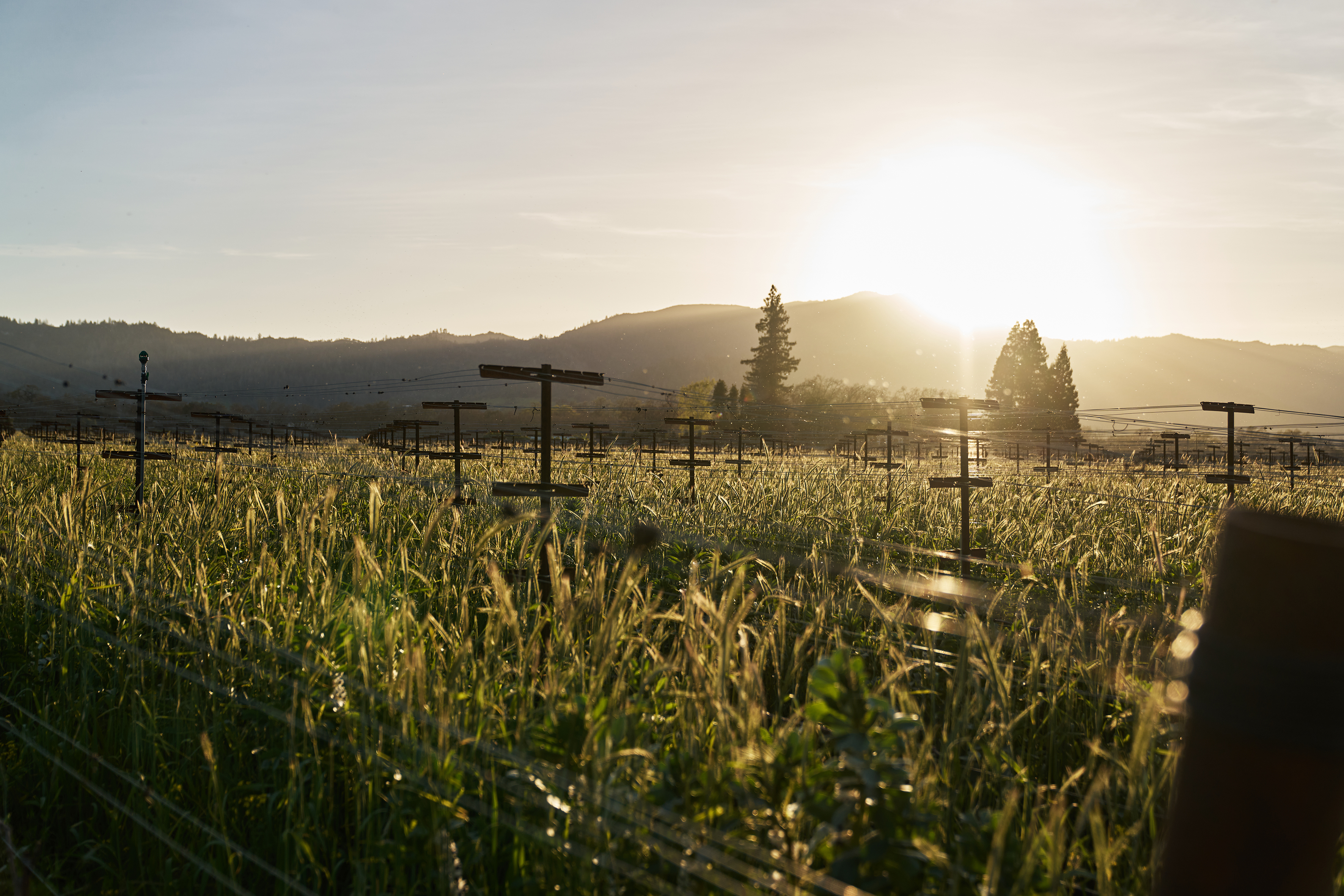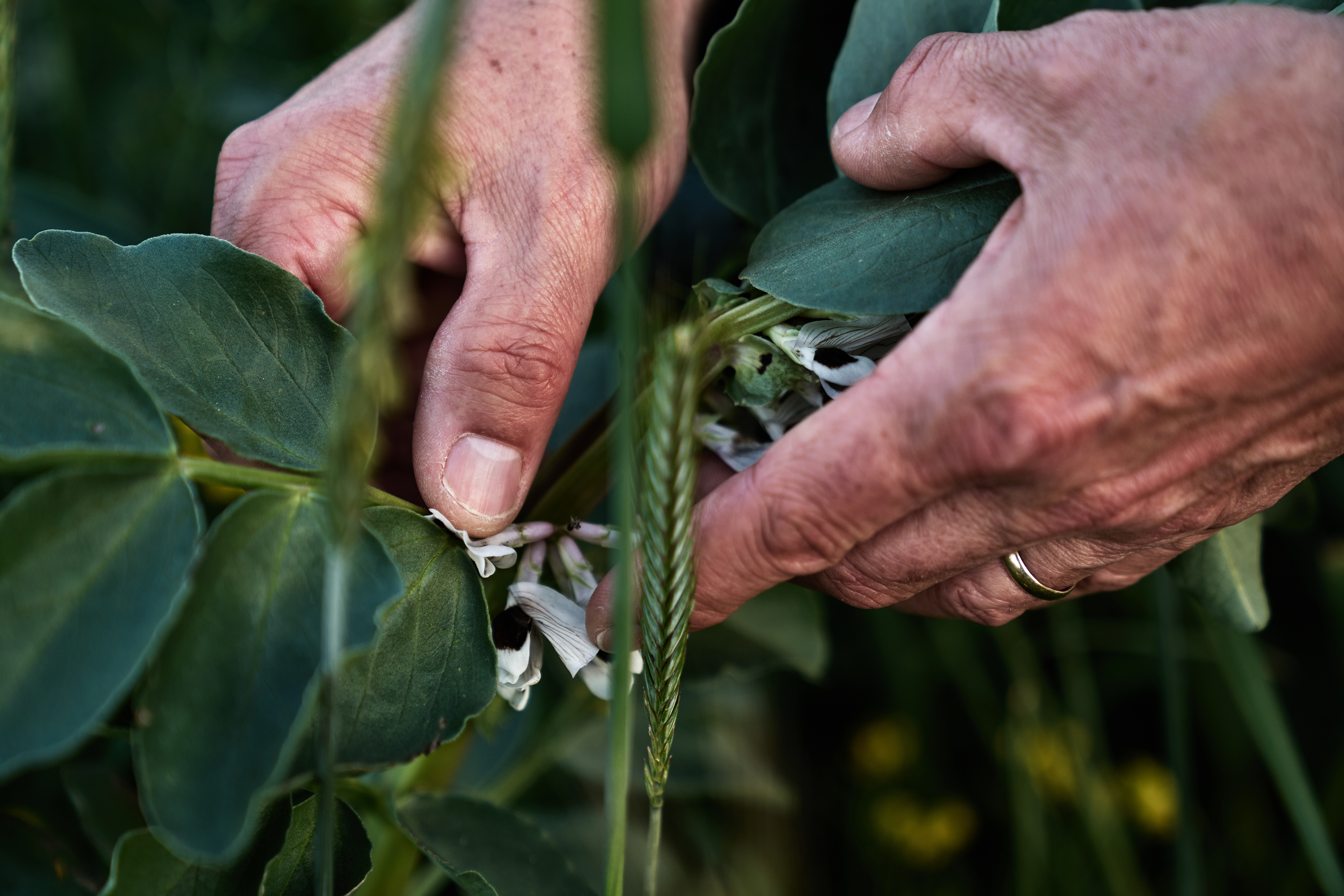04th Apr 2024
Favia is growing. The creation of Andy Erickson and Annie Favia, this boutique label has been based out of the couple’s home in Coombsville since commercial production started in 2002. Following a recent partnership with the Huneeus family in a prime vineyard site in Oakville, it’s moving to a new location. And it’s about to get a lot bigger.

The Art of Growing
Annie Favia loves growing things.
“I’ve had a special connection with plants since I was a small child,” she tells me. “Being outside amongst plants has always felt the most natural and right to me. Plants are incredibly fascinating, and I can’t keep myself from growing diverse types. California native plants are incredible–so tough and beautiful. The fact that they receive no water at all except what they scavenge from deep in the soil for half to ¾ of the year makes me admire and respect them so much. I also grow cut flowers, lots of vegetables, fruit, nuts, olives for olive oil, and, of course, herbs for my herbal tea company, ERDA TEA.”
Annie met Andy Erickson in 1995.
“I went to a friend’s house for dinner, and Andy happened to be his roommate,” she says. “Love at first sight!”



Andy was at the beginning of his wine career at that time.
“I started pre-med in undergrad but quickly knew that I was not going to make that happen. It was the 1980s, and there were some very interesting things happening in the world–the end of the Cold War and turmoil in Latin America–so I followed my interests and ended up studying political science and international relations. I was very lucky to attend a summer program where we studied at the United Nations in Geneva but lived with a family just across the border in the French Alps. They were passionate about food and wine, and I fell in love with the whole thing, not knowing at all that winemaking could be a vocation. I returned wanting to do something creative, and I ended up moving in with some friends to San Francisco and working in an advertising agency. One of our clients was a group of wineries in Napa, and I ended up going to meetings in Rutherford, staring out the window, and realizing that I should be out there and not in here. I ended up quitting my job to pursue the wine business.”
In 1994, Andy came to Napa Valley to work harvest at Stag’s Leap Wine Cellars. He worked a stint with John Kongsgaard at Newton, then enrolled in the enology program at UC Davis. After completing his degree at UC Davis, he went to work with Bob Levy as assistant winemaker for Harlan Estate. Around this same time, Annie began working for David Abreu as a viticulturist, where she would remain for more than a decade.
By the mid-2000s, Andy had left Harlan Estate and was working as a consultant winemaker for a few Napa wineries, as well as Jonata in Santa Barbara County, which was then owned by Charles Banks and Stan Kroenke. In 2006, when Banks and Kroenke purchased Screaming Eagle, Andy was asked to come on board as winemaker, although he has since parted ways. Today, Andy continues to be a winemaking consultant for Dalla Valle, Mayacamas, Arietta, Ellman Family Vineyards, Arborum, Cervantes Family Vineyards, and a couple of new projects that have not yet been released.
Meanwhile, Andy and Annie embarked on a small wine project of their own.
“We actually started by working with fruit from Coombsville in 1999,” says Andy. “At first, we were only going to make Cabernet Franc. That was our passion. In the very beginning, we made the wine in plastic bins in our garage.”
Then the couple bought what was previously known as the Antonio Carboni Winery and Italian Gardens in Coombsville, which dates back to the 1880s. This not only became their home but also the creative space to pursue their dream: Favia.
“In 2006, Annie was working for Abreu, and they were able to get us some Cabernet Sauvignon to blend with the Cabernet Franc we were making at Favia. We tasted all the components, and the Cabernet Sauvignon was so delicious we decided to bottle it on its own. Originally, we blended the Coombsville and Oakville fruit sources together. Then the vineyards started to speak individually, so from 2013, we bottled them separately.”
Today, Favia has four labels. “Cerro Sur” and “La Magdalena” pay homage to the couples’ original passion, Cabernet Franc.
“Cerro Sur comes from the southern part of the valley, out on Wooden Valley Road,” Andy explains. “It’s about 75% Cabernet Franc. La Magdalena comes from Oakville Ranch. It’s about 50% Cabernet Franc and 50% Cabernet Sauvignon. The Cerro Sur and La Magdelena–these wines were why we got into this. We love Cabernet Franc!”

The last vintage of the “Napa Valley” Cabernet Sauvignon was 2012, after which it was split into two single-vineyard AVA-designated wines, Oakville and Coombsville.
“The Oakville AVA wine comes from Oakville Ranch Vineyard–a red, iron-rich, rocky soil,” says Andy. “It needed to be dynamite blasted to prepare the soils. Phil Coturri farms it with us. The Coombsville AVA comes from Meteor Vineyard.”
2022 marked the twentieth vintage of Favia. That same year, the Huneeus family came to Annie and Andy with a proposal to join forces, which would include sharing a choice parcel of vineyard land they had purchased in Oakville in 2018. But it also meant sharing the Favia brand.
“Annie and I had worked for two decades creating what had become a beloved family business,” Andy tells me. “We were very protective of what we had created. It wasn’t that we were not interested in growing Favia; it was more that we had never considered having partners in Favia. But, having known the Huneeus family for almost 30 years and knowing the incredible beauty and potential of the Oakville property, we pretty quickly convinced ourselves that there was a conversation to be had. There are so many synergies—in the commitment to organic farming, in the alignment on the wines that we were making (and will continue to make), and in our work ethic and the commitment to family.”
Located off Oakville Road, bordering on the Napa River, the new Oakville site is 86 acres in total, with 68 plantable acres. Equally exciting, the property came with a winery permit, which is increasingly rare and valuable.
"We hope to break ground on the new winery in spring 2025 and be making wine there in 2027," Andy informs me. "As of now, we have planted all but about 10 acres. Fruit will be coming online in 2024."
“The new Oakville property is directly in the heart of the Napa Valley,” Annie adds. “You can feel it when you are on the land. The Mayacamas and Vaca ranges hug us and soils and minerals from both ranges have been depositing on our land for hundreds of thousands of years. It’s really cool!”
Varying clones and selections of Cabernet Sauvignon, Cabernet Franc (of course), Merlot, Malbec, and Sauvignon Blanc have been planted to the new Favia Oakville Estate site.
As for their vision for planting the new Oakville site, Annie says, “I want to leave any land we are on in a better state than when we found it. Our land has been CCOF (organic) certified for many years, and we practice biodynamic and regenerative principles. Having a holistic approach to our land and the surrounding environment is the only responsible thing to do in my opinion.”


This vision extends to the building of the new winery.
“We really want to emphasize the connection to the land,” says Andy. “And highlight that winemaking is a craft more than it is a science. We want the winery to blend into the environment, and we want the workspaces to feel more like a craftsman’s studio than a production facility. We also want, when people come to visit the property, that they are coming to spend time on the farm. The growing of the grapes is the most beautiful part of the process, so we want to capture that peaceful feeling of being in the vineyard. Also, Annie has the greenest thumb on the planet, so we want to share in the bounty of the gardens, orchards, and native plantings that will also inhabit the property.”
Plans are in place to eventually open the winery up to tasting experiences.
“We are hoping to provide the same thoughtful experience that we do now at our Coombsville winery,” says Andy. “We will be by appointment only but are excited to host visitors to the property.”
Currently, Favia produces around 2000 cases per year across the four labels. The brand will continue to source from Oakville Ranch and Meteor Vineyards. When the Favia Oakville Estate vineyard comes online in 2024, production will grow considerably, as will the diversity of wines and creative expressions of the land. I, for one, cannot wait to follow its expansion.
–
Article & Reviews by Lisa Perrotti-Brown MW
Photography by Christoffer Lomfors
See more work from Christoffer at lomfors.com by clicking here!

PRODUCERS IN THIS ARTICLE
> Show all wines sorted by scoreMore articles

Cathiard Vineyard New Releases
02nd May 2024
3 tasting notes

Bordeaux 2023 Preliminary Vintage Report and Reviews from Barrel
29th Apr 2024
56 tasting notes

2021 Bordeaux in Bottle and A Modest Proposal
24th Apr 2024
599 tasting notes

Pilcrow’s New Releases
18th Apr 2024
7 tasting notes
Show all articles